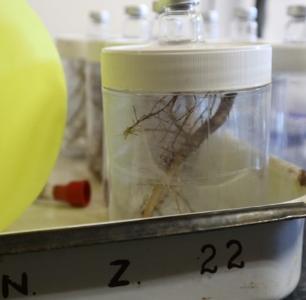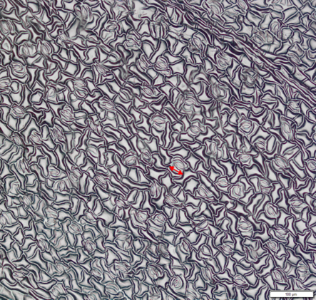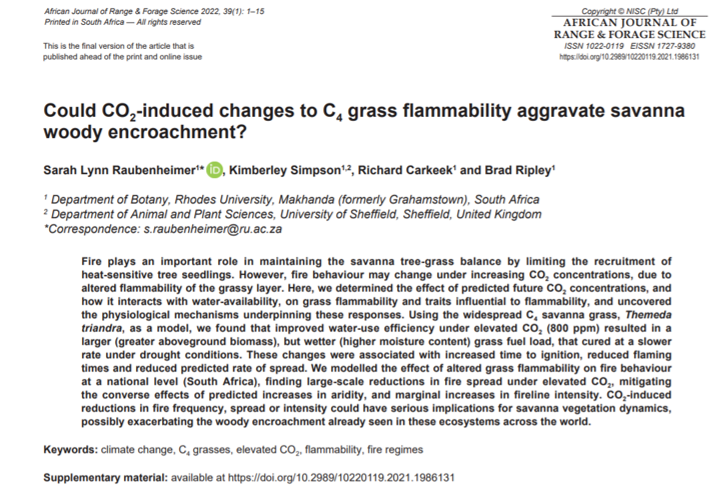Savannas are maintained as non-climax systems through limitations to tree establishment by disturbances such as herbivory and fire, and resource availability limitations through competition. A key part of this is the competition between establishing tree seedlings and the C4 grass layer. These different functional types are differentially affected by climate change and elevated atmospheric CO2 concentrations (eCO2). Photosynthetically, C4 grasses are CO2 saturated at current atmospheric CO2 concentrations, while C3 trees are not and hence tree seedlings are advantaged by increasing atmospheric CO2. This differential benefit has been used to argue that increasing CO2 concentration is driving the woody thickening and bush encroachment. Increased productivity and growth may allow tree seedlings to rapidly overcome critical size thresholds related to both drought and disturbance increasing their ability to establish.
This provides a feasible explanation for a phenomenon that is being observed globally in savanna. However, considerable geographic variation in this phenomenon is observed and has been correlated to climate, land use practice and interspecific variation in tree seedling response. Using the RUECF we are attempting to understand how interacting climate, disturbance and competition affect the response of tree seedlings to eCO2. To date we have shown that although C3 plants gain photosynthetic advantage, C4 grass remain competitive though increased water savings that prolongs their growing season. Additionally, the C3 advantage is diminished though competition for resources, when plants are subject to disturbance, but that the advantage remains with increased shading (Raubenheimer, 2021; Raubenheimer and Ripley, 2022). C4 grasses, via altered water relations, also have altered fire traits which has the potential to alter fire regimes (Raubenheimer et al 2021). The majority of this research has been conducted using Vachellia karroo and Themeda triandra, as key savanna species. This work is currently being expanded investigate multiple species ranging in their roles in woody thickening in southern Africa.
Researchers involved: Dr Sarah Raubenheimer (s.raubenheimer@ru.ac.za), Dr Kimberly Simpson, Prof Colin Osborne, Dr Nicola Stevens, Dr Tiffany Pillay, Prof Brad Ripley.


Photo cred: Sarah Raubenheimer
Associated publications:
Raubenheimer (2021) PhD, Rhodes University
Raubenheimer, S.L., Ripley, B.S. 2022. CO2-stimulation of savanna tree seedling growth depends on interactions with local drivers. Journal of Ecology.
Raubenheimer, S.L., Simpson, K., Carkeek, R. and Ripley, B., 2021. Could CO2-induced changes to C4 grass flammability aggravate savanna woody encroachment? African Journal of Range & Forage Science, pp.1-14. Raubenheimer et al., 2021

Last Modified: Thu, 17 Mar 2022 11:25:51 SAST